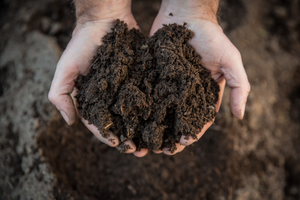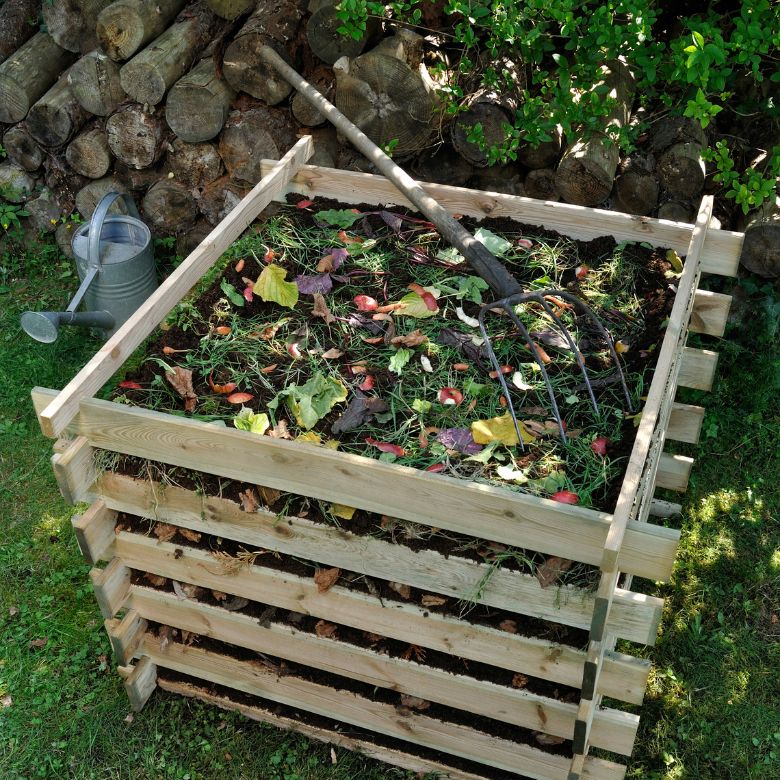When choosing food in the store, we are increasingly checking whether it comes from organic farming. One of the key objectives of sustainable management is to minimise the contribution of chemicals contained in fertilisers, among other things, and to use organic products instead. We can prepare natural fertilisers ourselves, using many of the products available in our households. What should we use to fertilise the soil in order to reduce the proportion of chemicals or to eliminate them completely from our crops?

Why should we use natural fertilisers?
There are many reasons why organic fertilisers are worth using for growing vegetables, fruits or flowers. The first advantage is revealed in its very name, i.e., the natural character of such products. Fertilisers produced from organic substances or waste can reduce the share of chemicals in crops, which is invaluable from an environmental point of view.
Another advantage of organic fertilisers is that they cost nothing and we can produce them ourselves using waste produced in households. Many people are quite surprised when they hear that… coffee grounds or nettle from the backyard are perfect for fertilising plants.
By turning household waste, but also old leaves, grass or branches into a valuable fertiliser, we can reduce the amount of trash that accumulates in our households. Much of the waste, rather than landing in the garbage can, could gain a ‘second life’ and contribute to the better growth of our plants.
Organic fertilisers: types and applications
The most frequently used natural fertilisers that can be produced for personal use without major problems are, among others:
- manure,
- compost,
- coffee and tea grounds,
- last year’s leaves,
- ash from the fireplace,
- nettle.
Each of those can be used to fertilise a variety of crops. Here are some useful tips on how to produce organic fertilisers from the above-mentioned materials.

Manure: a popular and very valuable fertiliser
It’s many people’s first thought, when they hear about organic fertilisers. No wonder – this natural waste, which is a by-product of poultry and pig farming, but also of cattle or horses, is characterised by a rich content of nutrients and elements – primarily nitrogen, which is essential for the effective growth of plants. Effective fertilising with manure involves spreading it over the crop and then mixing it with the soil by turning it.
Compost – a valuable source of humus
Another fully natural fertiliser that does not need to be prepared in a special way is compost, i.e., a mixture of leaves, mowed grass, branches, eggshells, vegetable remnants, rotten vegetables, and peelings. Adding it to the soil increases the amount of natural humus, moisture is also retained. Compost is an excellent fertiliser for vegetables, fruit trees, flower gardens and flowers.
Ash for better growth
Magnesium, calcium, phosphorus and sodium are the most important elements of which wood ash, obtained for example by burning wood in the fireplace, is a valuable source. However, it is important to remember that this is a high pH fertiliser and should not be used together with soil liming.
Fertilisers from tea and coffee
We can also successfully use coffee or tea grounds for growing plants. Such a fertiliser is particularly recommended for fertilising flowers: roses, azaleas, rhododendrons and hydrangeas, but also for carrots, berries, and especially blueberries.
Overdried grounds have to be mixed with soil at a ratio of 1:3, the next step is to scatter this mixture over the plants. The fertilisation should not take place more often than once a month.
Last year’s leaves as an ecological fertiliser
If deciduous trees are growing on our property, it is worth picking up the leaves that fall in the autumn to prepare a valuable fertiliser for next year. The leaves must be ground, covered with water and boiled for approximately 5 hours until a homogeneous, dense mass is obtained. After cooling, it can be placed, for example, under geraniums.
Nettle slurry is ideal for plants
Another idea for an organic fertiliser for home use is nettle slurry, which is a valuable source of iron, nitrogen, phosphorus and many other beneficial substances. Preparation method: 1 kg of fresh nettle (or 200 g of dried), add 10 l of water and leave for a minimum of 2 weeks, stirring daily. After the fermentation is finished, use the slurry for fertilisation of vegetables, fruit shrubs or perennial plants, diluting the slurry in water at a ratio of 1:10.

Can natural fertilisers be produced on an industrial scale?
The use of different types of household waste to fertilise vegetables, fruit crops or flowers allows to significantly reduce, and sometimes even completely forego the use of chemicals. Sustainability targets are also very important to fertiliser producers, who increasingly include products based on organic ingredients in their selection. A good example is manure that we can buy in the store in the form of dry, odourless pellets.
The advantage of using natural fertilisers – of course, in addition to limiting the concentration of synthetic compounds – is also the introduction of humus and organic matter into the ground, which is an extremely important component of any soil. It is also worth noting that many organic fertilisers consist of plant-safe substances, which means that the risk of over-fertilisation is much lower than in the case of chemicals.
